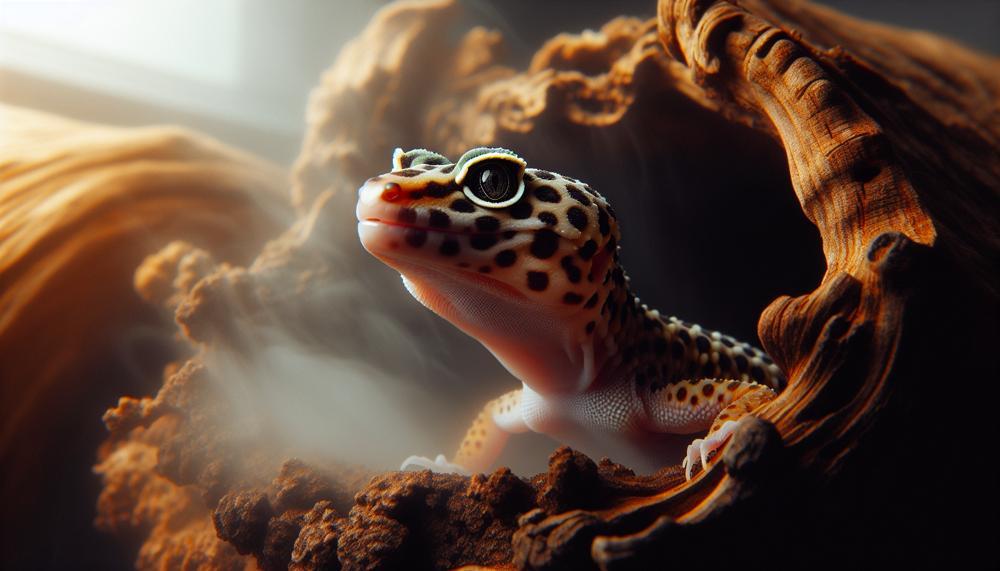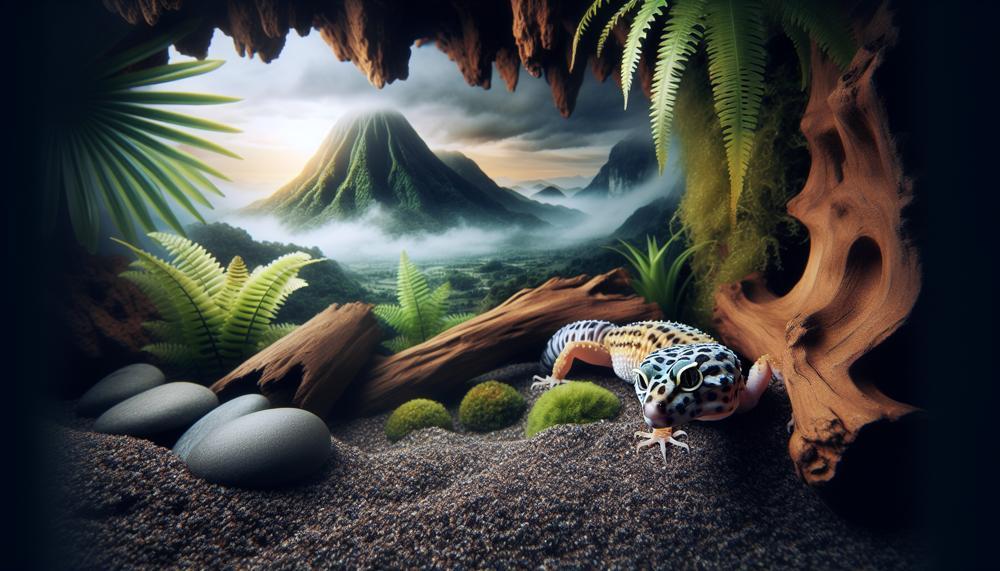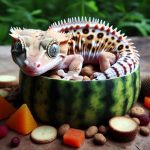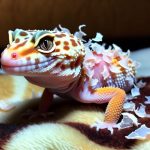Nestled in the rocky and arid regions of Afghanistan, Pakistan, and India, these resilient reptiles have adapted to thrive in harsh desert environments. But don’t be fooled by their tough exterior – behind those scaly hides lies a world of wonder.
- As nocturnal beings, leopard geckos come alive at night when the temperature drops.
- They can be found dwelling in burrows or crevices among rocks, expertly blending into their surroundings with their remarkable camouflage.
- With specialized toe pads that allow them to scale vertical surfaces and even walk upside down on ceilings, these geckos are true acrobats.
- Their diet consists mainly of insects such as crickets and mealworms, which they hunt for under the cover of darkness.
- Despite their name, leopard geckos do not share their habitat with leopards or other large predators – they prefer to keep a safe distance from potential threats.
Join us as we embark on an expedition into the natural habitat of leopard geckos. From their survival tactics to their behavior in the wild, there’s so much to uncover about these elusive creatures.
So grab your gear and let’s set out on a journey of discovery.
Contents
Leopard gecko natural habitat
When considering the natural habitat of leopard geckos, it’s important to note that they originate from the hot and arid deserts of Afghanistan, Pakistan, India, and Iran.
These small, terrestrial lizards have simple care requirements, making them a popular pet choice due to their calm demeanor and petite size.
However, to ensure the mental and physical well-being of these creatures, it’s crucial to create a suitable habitat for them.
Incorrect temperatures and humidity levels can lead to health problems for leopard geckos.
First and foremost, the enclosure size should be at least two and a half square feet for one gecko.

If housing multiple geckos together, adequate space is necessary for their comfort and safety.
It’s also important to consider the type of enclosure, temperature gradient, heating source, lighting, humidity levels, and substrate options when trying to replicate the natural environment of leopard geckos in the wild.
Providing enrichment through hides, water and food bowls, and other decorations can also greatly benefit these lizards by providing a stimulating environment.
Overall, it’s vital to maintain a well-designed habitat that mimics the natural environment of leopard geckos.
Risks a leopard gecko faces
Leopard geckos may appear to be healthy reptiles, but they are not immune to the dangers that lurk in their natural habitat. From predators to extreme weather conditions and food scarcity, these creatures face numerous threats. However, their survival instincts have helped them develop defense mechanisms to protect themselves.
- Predators: In the wild, leopard geckos are easy targets for larger animals like birds, snakes, and mammals. To evade these predators, they have mastered the art of camouflage, blending seamlessly into their surroundings. In a dire situation, they can also detach their tails to create a distraction and escape unnoticed.
- Harsh weather conditions: With their origins in the arid regions of Afghanistan, Pakistan, and India, leopard geckos are accustomed to extreme temperatures that can soar above 100 degrees Fahrenheit during the day and plummet below freezing at night. These resilient creatures have adapted by regulating their body temperature through basking in the sun or seeking shelter in cooler areas. Their unique skin also helps retain moisture, preventing dehydration.
- Food scarcity: In the wild, food can be scarce for leopard geckos, especially during harsh conditions like droughts or cold spells. To survive these tough times, they have developed a slow metabolism that allows them to go for extended periods without food. Their keen sense of smell also helps them locate prey in their environment.
More about leopard geckos
Leopard geckos are native to dry and semi-desert areas in Afghanistan, Iraq, Iran, and northwest India, displaying remarkable adaptations to their harsh surroundings.
Their physical features include rough, bumpy skin that helps them blend into the rocky terrain and retain moisture in their arid habitat. Their coloration ranges from light yellow to dark brown, with spots or stripes that provide camouflage against the sandy and rocky landscape.
Additionally, their large, lidless eyes with vertical pupils enable them to see well in low light conditions during dawn and dusk when they are most active. Their toes also have specialized adhesive pads that allow them to climb on rocks and vertical surfaces effortlessly.
In terms of behavior, leopard geckos are nocturnal creatures, meaning they are most active at night when the temperature is cooler and the risk of dehydration is lower. They have also adapted to their arid habitat by burrowing underground during the day to avoid the scorching heat.
To prevent dehydration, these geckos have evolved to store water in their bodies, absorbing it from their food and reusing it when needed. This slow metabolism allows them to conserve energy and survive for extended periods without food or water.
Also Read: Why Your Leopard Gecko Is Stargazing?
Conclusion
In essence, leopard geckos are truly remarkable creatures that have adapted to thrive in the unforgiving deserts of Afghanistan, Pakistan, and India.
As creatures of the night, they come alive when the sun sets and can be found taking shelter in burrows or crevices among rocky terrain. Their agile movements are aided by specialized toe pads, and their diet primarily consists of insects.
These geckos have developed unique survival tactics to overcome challenges such as predators, extreme weather conditions, and food scarcity.
Through physical features like bumpy skin for camouflage and behavioral adaptations like being most active at dawn and dusk, leopard geckos have honed their skills to survive in their harsh desert habitat.






